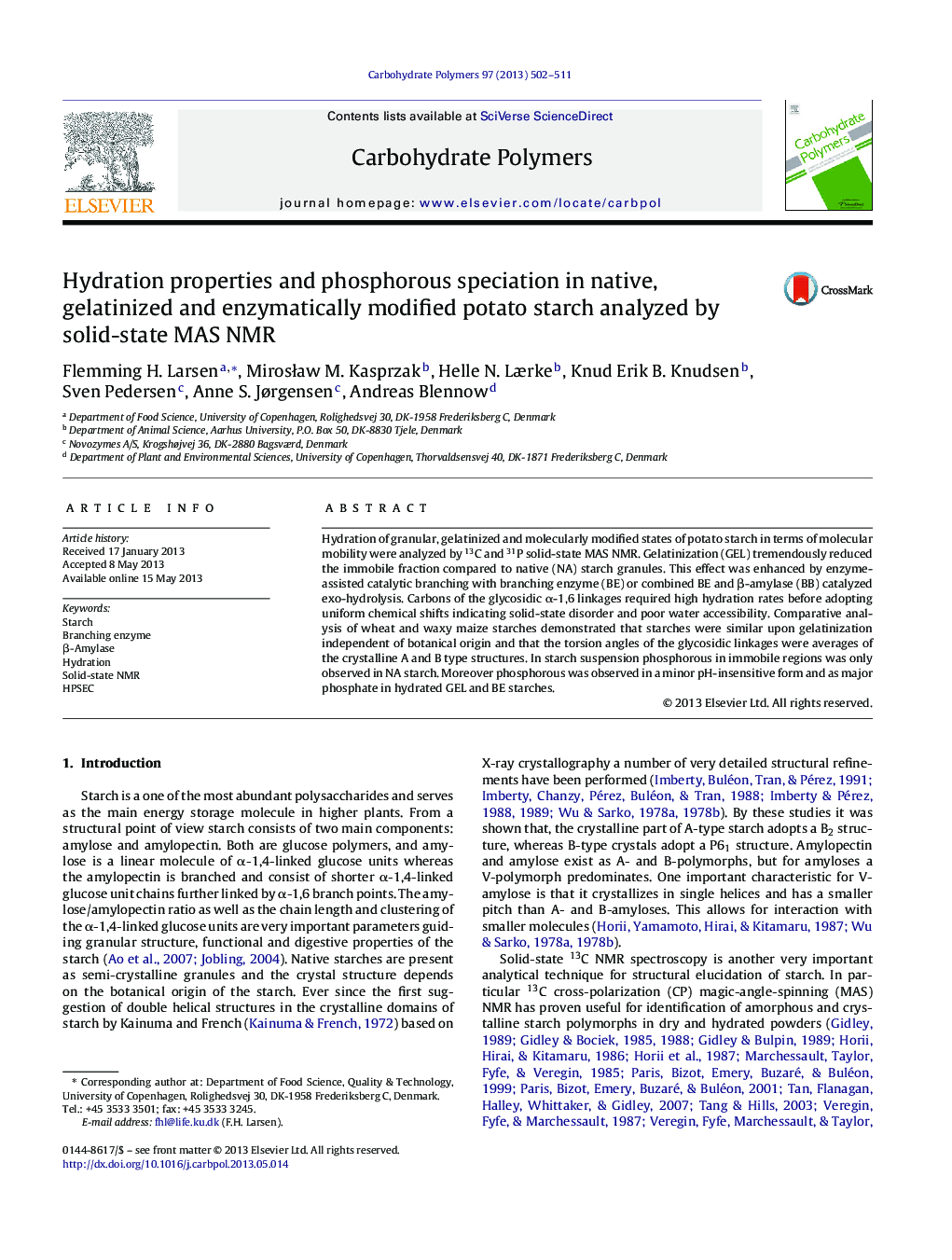| Article ID | Journal | Published Year | Pages | File Type |
|---|---|---|---|---|
| 10597083 | Carbohydrate Polymers | 2013 | 10 Pages |
Abstract
Hydration of granular, gelatinized and molecularly modified states of potato starch in terms of molecular mobility were analyzed by 13C and 31P solid-state MAS NMR. Gelatinization (GEL) tremendously reduced the immobile fraction compared to native (NA) starch granules. This effect was enhanced by enzyme-assisted catalytic branching with branching enzyme (BE) or combined BE and β-amylase (BB) catalyzed exo-hydrolysis. Carbons of the glycosidic α-1,6 linkages required high hydration rates before adopting uniform chemical shifts indicating solid-state disorder and poor water accessibility. Comparative analysis of wheat and waxy maize starches demonstrated that starches were similar upon gelatinization independent of botanical origin and that the torsion angles of the glycosidic linkages were averages of the crystalline A and B type structures. In starch suspension phosphorous in immobile regions was only observed in NA starch. Moreover phosphorous was observed in a minor pH-insensitive form and as major phosphate in hydrated GEL and BE starches.
Related Topics
Physical Sciences and Engineering
Chemistry
Organic Chemistry
Authors
Flemming H. Larsen, MirosÅaw M. Kasprzak, Helle N. Lærke, Knud Erik B. Knudsen, Sven Pedersen, Anne S. Jørgensen, Andreas Blennow,
